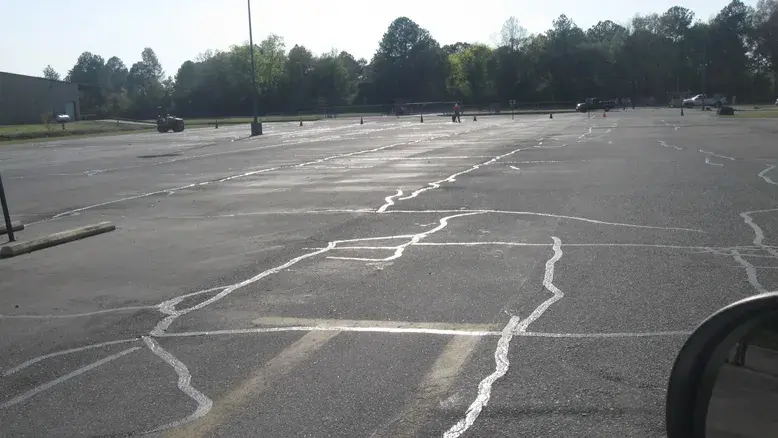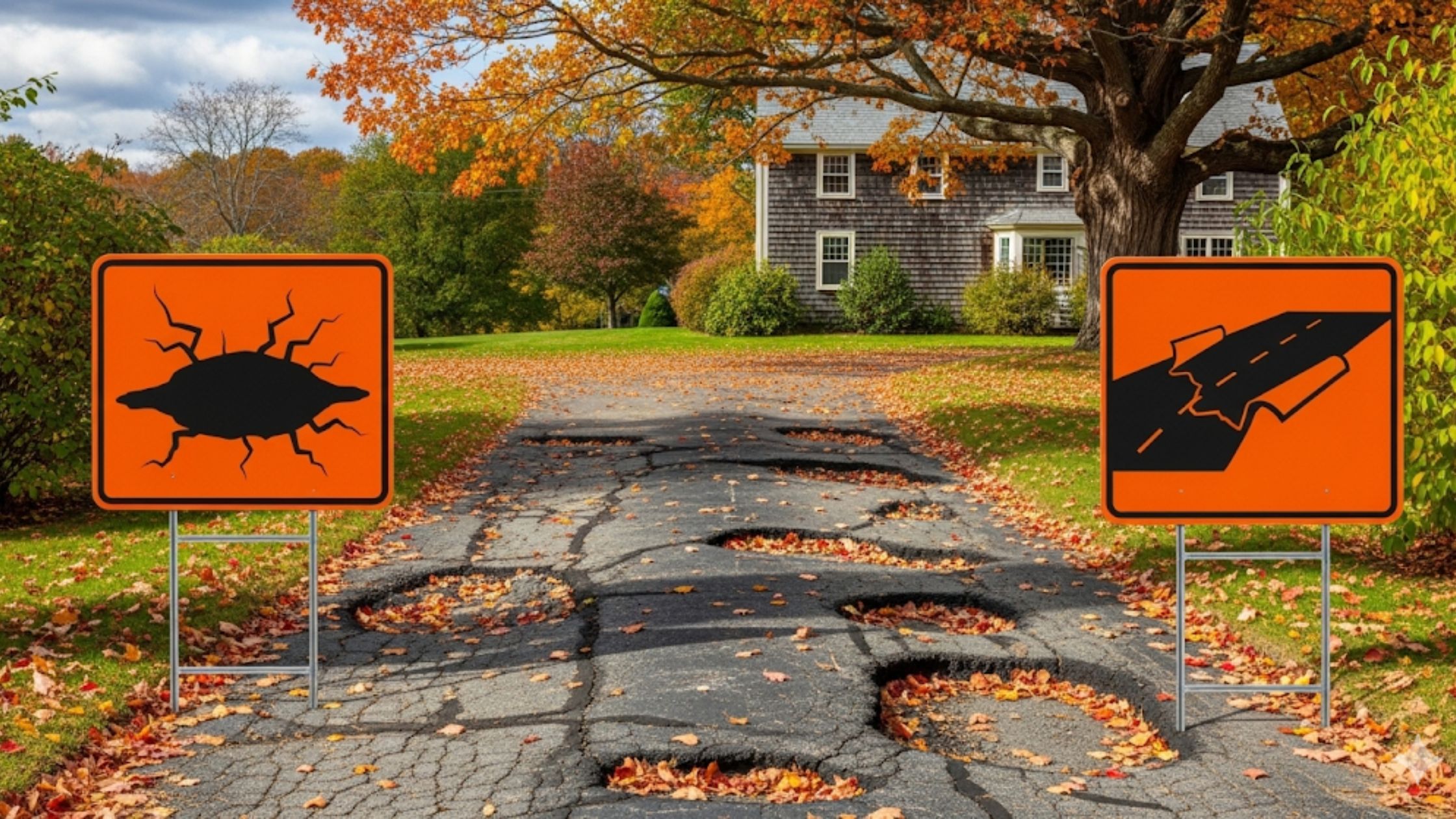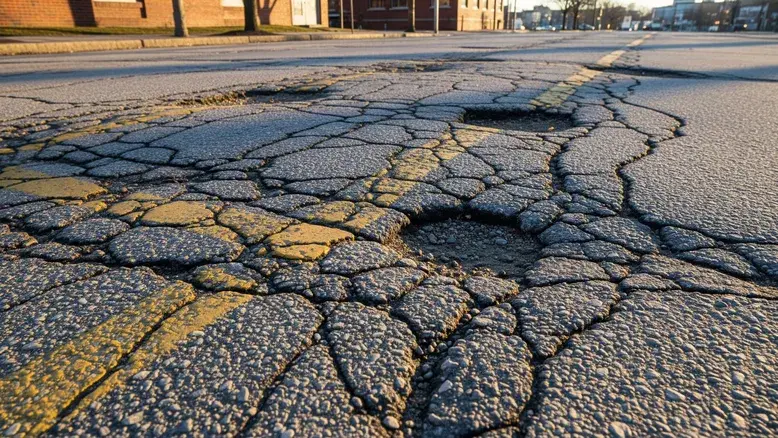Maintaining pavement in Massachusetts demands timely attention. Winter freeze-thaw cycles and heavy spring rains can turn tiny fissures into costly damage. Recognizing when to act on crack filling signs prevents moisture infiltration and foundation weakening.
Localized pavement distress often begins subtly. Property managers and homeowners may overlook hairline fractures until potholes emerge. Early detection of pavement damage indicators extends surface lifespan and safeguards asphalt structure.
Why Timely Crack Filling Matters in Massachusetts
Massachusetts roads endure harsh winters and frequent temperature swings. Ice and snow infiltrate cracks, expanding and deepening them. Swift crack filling blocks water, preserves subbase integrity, and delays full resurfacing.
Consistent crack maintenance also supports state DOT standards. Neglecting small cracks can lead to alligator cracking patterns and crumbling edges. Industry veterans recommend scheduled inspections in spring and fall for cost-effective upkeep.
Professionals rely on proven asphalt repair warning signs to guide intervention timing. Addressing minor damage early can save thousands in repair budgets and reduce traffic disruptions during peak seasons.
In regions like Boston and Worcester, moisture management is essential. Effective crack sealing protects kerbs, driveways, and parking lots from erosion. Entrusting work to local experts like The SealCoating Guys ensures quality, backed by regional experience.
The Impact of Weather on Pavement in Massachusetts
Winter freeze-thaw cycles force water into tiny cracks. As temperatures fluctuate, ice expands and fractures pavement layers. Repeated cycles accelerate subgrade erosion and undermine base materials.
Spring brings heavy rainfall. Poor drainage allows water to pool in depressions and cracks. Standing water weakens asphalt binder and encourages rutting under traffic load.
Summer heat also contributes to damage. UV radiation oxidizes surface oils, causing brittleness. This oxidation makes pavements more susceptible to cracking when vehicles pass overhead.
Key Pavement Damage Indicators
Pavement distress reveals itself through various indicators. Understanding these signs helps property owners prioritize crack filling before wider deterioration occurs.
Surface Cracking: Early Warning Sign
Hairline cracks across pavement surfaces often signal binder fatigue. These cracks tend to follow traffic patterns and may widen rapidly under heavy loads.
As cracks grow beyond 1/8 inch wide, moisture intrusion accelerates base erosion. Proactive crack filling hinders water entry, preserving foundational layers and preventing pothole development.
Pothole Formation: When Cracks Evolve
Unfilled cracks allow water to seep beneath the pavement. Freeze-thaw expansion and constant vehicle pressure turn fissures into potholes, risking vehicle damage and pedestrian safety.
Timely crack filling addresses the root cause of potholes. Filling prevents water flow below the surface, halting pothole progression and avoiding expensive full-depth repairs.
Fading and Discoloration: Oxidation at Work
UV exposure gradually bleaches asphalt, indicating oil loss. Surface discoloration often precedes cracking, as oxidized pavement loses flexibility.
Sealcoating can restore color and protect binder. Until then, faded areas warrant inspection for underlying micro-cracks and emerging damage.
Asphalt Repair Warning Signs to Watch For
Broadening the view uncovers additional distress markers. Identifying these indicators early informs crack sealing and maintenance scheduling.
Edge Spalling and Raveling
Crumbled edges reveal binder breakdown and gravel loss. Raveling often starts along curbs and wheel paths, where water pools first.
Sealing these edges and filling adjacent cracks prevents further aggregate loss. Without treatment, edge deterioration can threaten entire pavement sections.
Alligator Cracking: The Red Flag
Interconnected network cracks resemble alligator skin. This distress indicates subbase failure and heavy fatigue from repetitive loading.
Repairing alligator cracking often requires more than surface filling. However, targeted crack injection can stabilize shallow fissures and slow network expansion.
Line Striping Fading: Hidden Trouble
Fading pavement markings may signal more than cosmetic aging. Poor reflection and worn paint often coincide with surface degradation below.
When striping fades, inspectors should also check for shallow cracks beneath. Tackling both marking and crack sealing preserves safety and prolongs pavement utility.
Crack Filling Signs: When to Call Professionals
Knowing exactly when cracks demand professional attention avoids premature failure. These assessment criteria guide property managers in choosing service timing.
Measuring Crack Width and Depth
Cracks wider than 1/4 inch typically require expert sealing. Depths exceeding 1/2 inch can host standing water, necessitating professional cleanup and filling.
Precise crack measurements inform the right filler material choice. Hot-pour rubberized sealant or epoxy-based compounds ensure long-lasting adhesion.
Frequency of Cracking: Patterns and Causes
Linear cracks following vehicle paths imply thermal stress or binder fatigue. Transverse cracks perpendicular to traffic suggest temperature contraction effects.
Understanding crack patterns helps technicians recommend targeted concrete crack filler service in Massachusetts that addresses both symptom and cause.
Selecting the Right Concrete Crack Filler Service in Massachusetts
Choosing a reputable contractor ensures lasting repairs. Experience in local climate conditions matters when evaluating service providers.
Professionals should offer comprehensive assessments, detailing crack causes and recommended materials. Transparent quotes and warranties demonstrate confidence in workmanship.
Local expertise adds value. A team familiar with Massachusetts DOT specifications and freeze-thaw cycles will tailor crack filling methods to seasonal constraints and regulatory requirements.
Service providers often blend sealcoating and crack filling. Combining both treatments in a single visit maximizes protective coverage and reduces future maintenance windows.
Material Options for Crack Filling
Technicians select from a variety of fillers, each suited to specific crack types and environmental factors.
Hot-pour rubber sealant offers elasticity and water resistance. It expands and contracts with pavement movement, sealing both surface and shallow subsurface fractures.
Cold-pour emulsions suit lower temperatures or small hairline cracks. They cure quickly and can be applied in fall or spring when hot-pour methods are impractical.
Epoxy-based fillers bond strongly to concrete cracks. These fillers excel in driveways or sidewalks where structural integrity demands rigid restoration.
UV-resistant compounds prevent early breakdown under summer sun. Proper material choice extends crack filling lifespan beyond typical one-year cycles.
Professional vs DIY Approaches
DIY products may work for minor surface cracks. Homeowner kits often include pourable sealant and simple prep instructions.
However, large or deep cracks merit professional intervention. Pros use specialized cleaning tools, compressed air drying, and heat-activated bonding methods.
Professional crews also follow safety guidelines and environmental controls. Proper disposal of old filler and surface prep ensures compliance with state regulations.
Frequent local contractors like The SealCoating Guys deliver consistent results. Their trained teams handle complex schedules, ensuring minimal disruption to traffic and property usage.
Best Practices for Crack Filling in Enhancing Asphalt Longevity
Proper preparation and follow-up care proves as critical as the filling itself. Adhering to best practices ensures long-term performance.
Pre-Repair Inspection and Preparation
Technicians clear debris, vegetation, and old filler before sealing. Cracks often harbor sand, dirt, or roots that inhibit adhesion.
Hot air lance drying or crack routing widens fissures to accept sealant uniformly. Preheating pavement surfaces at low temperatures further improves bond.
Post-Filling Maintenance Tips
Owners should avoid traffic on fresh sealant until manufacturer cure times lapse. This prevents premature tearing and sealant migration.
Regular sweeps remove contaminants that accumulate along filled cracks. Inspecting filled areas quarterly helps identify minor breaches before next maintenance cycle.
Routine sealcoating reapplied every two to three years protects filled cracks and restores surface oils, maximizing asphalt flexibility.
Guide to Asphalt Crack Filling in Massachusetts
A step-by-step process streamlines crack filling projects in the Bay State. Understanding each stage sets realistic timelines and expectations.
Step-by-Step Filling Process
First, technicians schedule work during mild weather. Early spring or late fall brings ideal temperatures between 40°F and 80°F for most sealants.
Next, crews clean cracks using wire brushes, routers, and compressed air. Proper cleaning removes all impediments to adhesion.
After routing, they dry cracks with hot air lances or propane torches. This step eliminates moisture that can undermine bond strength.
Crack heat-fusion methods follow, melting hot-pour sealant directly into routed channels. Crews overfill slightly, letting sealant settle below pavement plane.
Finally, excess sealant is squeegeed or struck off. Curing begins immediately; crews protect newly filled cracks from water and debris until full set.
Why Choose Local Expertise
Local teams understand Massachusetts’ unique climate challenges. They time projects around seasonal freeze-thaw cycles and regional rainfall patterns.
Experienced contractors liaise with municipal inspectors to secure permits when work impacts public roads. They also advise on proper signage and traffic control.
A local Guide to Asphalt Crack Filling in Massachusetts helps property owners navigate compliance, ensuring both safety and regulatory adherence.
Conclusion: Protecting Massachusetts Pavement with Expert Crack Filling
Proactive crack filling shields pavement investments from expanding damage. Identifying crack filling signs, understanding pavement damage indicators, and heeding asphalt repair warning signs all support timely action.
Professional services like those from The SealCoating Guys deliver specialized expertise. Local contractors apply industry-best materials and methods to address both surface cracks and structural issues.
By following best practices and maintaining regular inspections, property owners in Massachusetts can maximize asphalt longevity. Early crack filling delays costly full-depth repairs, preserves curb appeal, and keeps transportation routes safe.
Frequently Asked Questions
What is the best time of year for crack filling in Massachusetts?
Ideal seasons are spring and fall when temperatures range between 40°F and 80°F. These conditions promote proper sealant adhesion and curing.
How long does crack filling last in Massachusetts climate?
High-quality hot-pour rubber sealants typically last 1–3 years, depending on traffic load and weather exposure. Annual inspections help gauge reapplication needs.
Can small cracks be ignored until next season?
Ignoring cracks risks rapid expansion during freeze-thaw cycles. Filling hairline cracks within weeks of detection prevents moisture infiltration and base layer weakening.
Is DIY crack filling effective?
DIY kits can handle minor surface cracks under 1/4 inch wide. Larger, deep, or network cracks require professional-grade preparation and materials for lasting repair.
How much does a professional concrete crack filler service in Massachusetts cost?
Costs vary based on crack length, width, and site access. Typical range is $1.50–$4.00 per linear foot. Detailed quotes should include prep, material, and labor.






.webp)

.svg)



